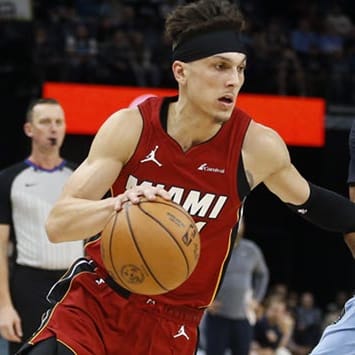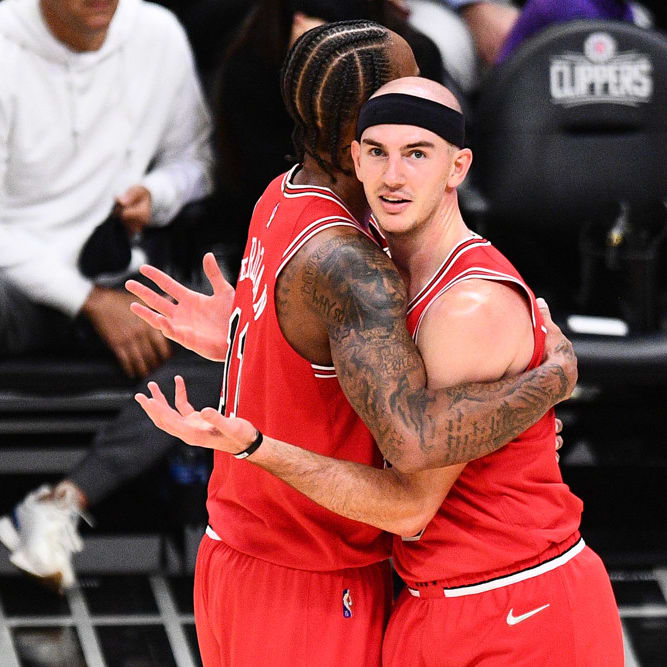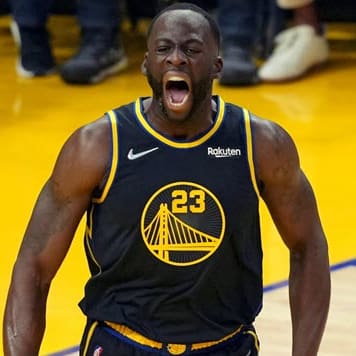This article is part of our Season Review series.
It's never too early to start preparing for next year's fantasy basketball season.
One way we'll help you do that is by reviewing each team, highlighting what went right and what went wrong in 2017-18. We'll also take a look at the current state of the roster to see what moves they could potentially make over the summer, and what impact those could have, from a fantasy perspective.
As we continue to work our way through the reverse order of the regular season standings, it's time to examine the Heat, Nuggets and Spurs.
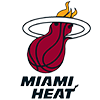 MIAMI HEAT
MIAMI HEAT
The Good
Miami claimed the sixth seed in the East with Goran Dragic as its lone All-Star, and even he was selected as a replacement for Kevin Love, who was out after breaking his hand. The Heat played at the league's fifth-slowest pace (95.6) and found much of their success on defense, allowing the seventh-fewest points per 100 possessions (106.3), partially as a product of their seventh-ranked defensive effective field-goal percentage (50.7). In addition to forcing teams into bad looks, Miami also made sure to get the rebound, ending up with the sixth-best defensive rebounding rate (79.0 percent) in the league.
With no true star on the roster, the Heat got by with a deep bench, with seven players seeing between 20 and 30 minutes per game. Despite dealing with some impactful injuries (Hassan Whiteside played 54 games, Dion Waiters played 30), most rotation players were able to swing between at least two positions, helping coach Erik Spoelstra keep things afloat. The Heat even got meaningful contributions from 14th overall pick Bam Adebayo -- 6.9 points, 5.5 rebounds, 1.5 assists and 1.1 combined steals/blocks in 19.8 minutes -- who was more NBA-ready than anticipated and ended up starting 19 games.
A few other players worth noting are Josh Richardson, Kelly Olynyk and Justise Winslow. Richardson, the 40th overall pick in 2015, finally got things to click after battling injuries for his first two years in the NBA. He led the Heat in minutes per game (33.2) and averaged 12.9 points on 45.1 percent shooting from the field and 37.8 percent from deep. Richardson also posted 3.5 rebounds, 2.9 assists and a combined 2.4 steals/blocks per game. When it comes to fantasy, Richardson was projected to fall outside the top 125, but he finished the year ranked 35th in total production.
Olynyk's numbers don't jump off the page -- 11.5 points, 5.7 rebounds and 2.7 assists in 23.4 minutes -- but he was highly valuable to the Heat, leading the team in both true shooting percentage (61.2%) and net rating (+4.9) of players who appeared in more than 18 games. Like Richardson, he wasn't expected to be a top-100 fantasy player but played himself into the 70th overall slot by season's end.
Finally, Winslow found some success in Year 3 following a subpar rookie season and a sophomore year that was almost completely lost to injury. He still struggled from the free throw line (63.5%), but he shot 49-of-129 (38.0%) on threes and finished tied with Adebayo for the Heat's best defensive rating (102.1).
The Bad
Miami struggled offensively, ranking in the bottom half of the league in turnover rate (19th, 13.3%), offensive rebounding rate (19th, 21.5%) and free-throw rate (25th, .173). The Heat could also only manage average efficiency, with their 55.1% true shooting percentage ranking 15th.
On an individual level, it was a confusing year for Hassan Whiteside. After averaging 32.6 minutes and leading the league in rebounds per game (14.1) last season, his role was reduced to a modest 25.3 minutes per contest. Last season's success prompted many fantasy owners to draft Whiteside within the first two rounds, but he ended up finishing as the 49th-ranked player by average production, recording 14.0 points, 11.4 rebounds and 1.7 blocks per game on 54.0% shooting. Coach Erik Spoelstra felt that deploying Whiteside for long stretches wouldn't lead to victories, as evidenced by the big man's -2.4 net rating, which was the worst on the team among players who played more than 30 games.
Dion Waiters being limited to 30 games on an injured ankle also hurt Miami. He was the Heat's third-leading scorer last season at 15.8 points per game. While his efficiency was subpar (50.7% true shooting), he was one of only a few players capable of creating his own shot. There's a pretty low ceiling on an offense with Goran Dragic as the team's most reliable scorer.
The State of the Franchise
As currently constructed, the Heat don't appear to have much upward mobility in the standings. Whiteside will be the highest-paid player next season at $25.4 million, with Tyler Johnson coming in No. 2 at a bloated $19.2 million. Whiteside is having trouble staying on the floor, while the 26-year-old Johnson averaged a modest 11.7 points, 3.4 rebounds and 2.3 assists across 28.5 minutes. Both players have healthy player options for the 2019-20 campaign, so trying to move them in trades to free up cap room will be easier said than done, especially in the case of Whiteside.
In addition to Whiteside and Johnson, the Heat have committed too much money to too many players who likely won't make a significant leap in production. They'll have an aging Dragic on the books for $18.1 million next season with a $19.2-million player option for 2019-20. James Johnson is under contract for two more years at a total of $29 million, while Waiters will make $36 million over the next three seasons. Olynyk has two more years at a combined $22.7 million with a $12.1 million player option in 2019-20.
If Miami manages to make it past the first round of the playoffs within the next two years, it would probably come as a result of improvements by the Heat's trio of young players: Josh Richardson, Bam Adebayo and Justise Winslow. Miami doesn't have any draft picks in 2018, so any roster improvements will have to come via trade or at the margins.
 DENVER NUGGETS
DENVER NUGGETS
The Good
The Nuggets' strength was their offense, which finished the season ranked sixth in points per 100 possessions (112.5). Denver passed well as a whole, ranking fifth in assists per 100 possessions (25.7) and finishing with the seventh-best true shooting percentage (57.0%) in the league. When shots didn't fall, the Nuggets often got second chances with a 25.7 percent offensive rebounding rate -- good for second in the league. Defensively, Denver found success by limiting opponent free-throws, claiming the sixth-lowest opponent free-throw rate (.173).
Nikola Jokic anchored the Nuggets once again, leading the team in PER (24.4) and Win Shares (10.7) for the second straight season. He posted career-highs nearly across the board and, perhaps most notably, shot 39.6 percent from beyond the arc. From a fantasy perspective, he lived up to expectations, garnering a preseason rank of 10th and finishing 13th in average production via 18.5 points, 10.7 rebounds, 6.1 assists and a combined 2.0 steals/blocks.
Outside of Jokic, the backcourt trio of Gary Harris, Will Barton and Jamal Murray were each capable of providing an offensive punch on any given night. Murray, the youngest of the group at 21 years old, was given a bigger scoring role during his second season in the league. In addition to raising his scoring from 9.9 to 16.7 points per game on 4.2 more shot attempts, Murray bumped up his true shooting percentage from 51.8% to 57.6%.
Murray also posted 3.7 boards, 3.4 assists and 1.0 steal per contest, helping him become the 58th-ranked fantasy player by average production. The 23-year-old Harris, in his fourth year in the league, made another step as a three-and-D shooting guard, posting career highs in scoring (17.5 PPG) and steals (1.8) per game. He was projected to fall just out of the top-100 as a fantasy asset but finished 39th in average production.
Amid several injuries on the wing throughout the season, Barton played a super-sixth-man role, seeing 33.1 minutes per game and starting 40 of his 81 appearances. His well-rounded game -- 15.7 points, 5.0 rebounds, 4.1 assists and 1.0 steals -- combined with his health allowed him to be the 32nd-ranked fantasy player by total production, outpacing his preseason rank of 115 by a massive margin.
The Bad
Looking for a defensive anchor and a win-now presence, the Nuggets signed Paul Millsap to a three-year, $90 million contract in the offseason. However, the wheels quickly fell off after Millsap suffered a wrist injury in mid-November, which ultimately limited him to just 38 games. Had the veteran played all season, Denver may have made the postseason, as Millsap boasted the Nuggets' best defensive rating (107.0) and second-best net rating (4.1), behind only Jokic (4.6).
Instead, the Nuggets were unable to force opponents into bad shots, allowing the fifth-highest opponent effective field-goal percentage (53.9), leading to the sixth-most opponent points per 100 possessions (110.9). Denver also had difficulty forcing transition situations, finishing the year ranked 20th in opponent turnover percentage (12.6).
This was also the season Denver management decided to move on from Emmanuel Mudiay, who was drafted seventh overall pick in the 2015 NBA Draft. Of players on the Nuggets who appeared in at least 25 games and averaged 10-plus minutes, Mudiay had the worst net rating (-8.6) before being dealt to New York in a three-team deal that sent the Mavericks' Devin Harris to Denver. Harris posted a negative net rating (-2.1) as well, but it was clearly an upgrade.
The State of the Franchise
All that could be standing between Denver and a postseason berth next year is a healthy Millsap and more time to gel with Jokic, and that's before factoring in expected improvement from the Nuggets' young players. However, GM Tim Connelly may have to fight off teams looking to poach Barton, who was on arguably the best contract in the entire league and will finally be an unrestricted free agent this summer. He was one of only 10 guards this season to average at least 30 minutes, post a usage rate of 20.0% or higher, and commit fewer than 2.0 turnovers per game.
If there's a silver lining to missing the playoffs, it's that the Nuggets do have a lottery pick (14th) in next month's draft. In that range, the Nuggets could explore more help at point guard behind Jamal Murray, or someone to relieve Wilson Chandler, who has a $12.8-million player option for 2018-19, from playing 31.7 minutes per game. Chandler just turned 31 years old and had a down year, averaging 10.0 points on 8.5 shots per game.
Assuming Jokic receives his expected contract extension next season, most of Denver's intriguing roster decisions will actually arrive in the summer of 2019. Then, Paul Millsap has a $30.5-million team option, Kenneth Faried and Wilson Chandler -- assuming he opts in and returns next season -- will be off the books, and Mason Plumlee will be an expiring contract.
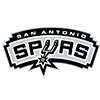 SAN ANTONIO SPURS
SAN ANTONIO SPURS
The Good
San Antonio, the third-slowest paced team behind only Memphis and Sacramento, continued to succeed on offense by making smart passes, averaging the 10th-most assists per 100 possessions (23.9) and posting the fifth-lowest turnover percentage (12.2) in the league. Cleaning up misses on both sides of the ball, the Spurs also recorded the third-most rebounds per 100 possessions (46.4). On defense, stopping shots at the rim and on the perimeter took precedent, with San Antonio forcing opponents into the sixth-worst percentage at the rim (63.3%) and fourth-worst from three (34.8%). Opponents struggled to draw contact, as well, as the Spurs allowed the third-lowest free-throw rate (.170). Those factors resulted in the league's third-best defensive rating of 104.8, which marked the 20th time in 21 seasons that San Antonio has finished with a defensive rating under 105.0.
Despite getting only nine games of Kawhi Leonard, the Spurs were still able to claw their way into the postseason. LaMarcus Aldridge carried most of the burden, leading the team in points (23.1), rebounds (8.5) and blocks (1.2) per game. Fantasy owners got more than they expected from the veteran, as he ended up as the league's 26th-most productive fantasy player by average output, despite a preseason ranking of 49.
A couple of the Spurs' notable young players, Kyle Anderson and Dejounte Murray, were forced into bigger roles, as well. Anderson's numbers -- 7.9 points, 5.4 rebounds, 2.7 assists and 1.6 steals per contest -- seem underwhelming, but he averaged the second-most minutes on the team (26.7) and ended up with San Antonio's third-best net rating (4.6) and second-best true shooting percentage (58.2%). For fantasy purposes, Anderson, the 30th pick in the 2014 Draft, was projected outside of the top-200, but finished the year a surprising 68th in terms of total production.
Murray officially usurped Tony Parker as the Spurs' starting point guard in late January and went on to start the final 34 games of the year. Across that stretch, he averaged 10.5 points, 7.0 rebounds, 3.4 assists and 1.8 steals per game. Murray also posted the team's second-best net rating (5.7) on the season. He wasn't as valuable in fantasy as Anderson but finished as the league's 129th-best player by total production.
The Bad
The bulk of San Antonio's struggles came as a direct result of Kawhi Leonard's absence. Without him, the Spurs struggled to get and covert good looks, finishing the year with the NBA's fifth-worst effective field-goal percentage (50.7%). Plus, San Antonio settled for the highest percentage of shots from 10-16 feet (14.3), though much of that was the result of LaMarcus Aldridge playing such a big role, as he often operates from the high post/elbow. When it came to getting to the charity stripe, the Spurs unsurprisingly struggled without Leonard, ending up 18th in free-throw rate (.189).
So, what happened with Leonard? Following what we thought was a full recovery from a quad injury, he made his season debut in mid-December after being out since Game 1 of the 2017 Western Conference Finals. He appeared in just nine games from Dec. 12 to Jan. 13, however, before ending up back in street clothes due to lingering pain in his quad. The team released a statement indicating that Leonard would be sidelined for an "indefinite period". About a month later, coach Gregg Popovich stated that, despite Leonard being medically cleared, he would be surprised if Leonard took the floor for the Spurs again that season.
There was some hope Leonard would play in mid-March, with reports suggesting that he had a targeted return date of March 15 against the Pelicans. After missing that contest, Leonard essentially became day-to-day, though any optimism faded as the regular season wound down. Various comments from Popovich and teammates, as well as the actions of Leonard have suggested a significant rift between the two sides, fueling rumors that Leonard's days with the organization could be numbered. As things stand in late-May, Leonard's future is as murky as ever.
The State of the Franchise
Have I mentioned Kawhi Leonard yet? His relationship with the Spurs isn't just the biggest story in San Antonio, it's one of the biggest stories in sports heading into the summer. The former Finals MVP is due to make just over $20 million next season, with a player option for $21.3 million in 2019-20 that he will almost certainly decline to seek a longer-term deal. Of course, the world exists in which Leonard gets back to full health and repairs his relationship with San Antonio, helping lead the team deep into the postseason once again. But, that's only fun for Spurs fans.
For the rest of us, there's the infinitely more interesting scenario in which GMR.C. Buford is talking on two cell phones simultaneously, pitting competing offers against each other and trying to squeeze every last asset out of a team before handing over Leonard. Given Leonard's contract situation, though, he can almost force the Spurs into negotiating with a short list of teams with which he'd agree to sign a long-term extension. Otherwise, San Antonio could end up getting pennies back on the dollar. The teams on Leonard's hypothetical list could end up dictating whether the Spurs fall into a rebuild -- unprecedented for the modern era -- or remain competitive. If the Spurs ultimately move on from Leonard, it could carry ramifications for veterans like Aldridge, Pau Gasol and free-agent-to-be Danny Green.







